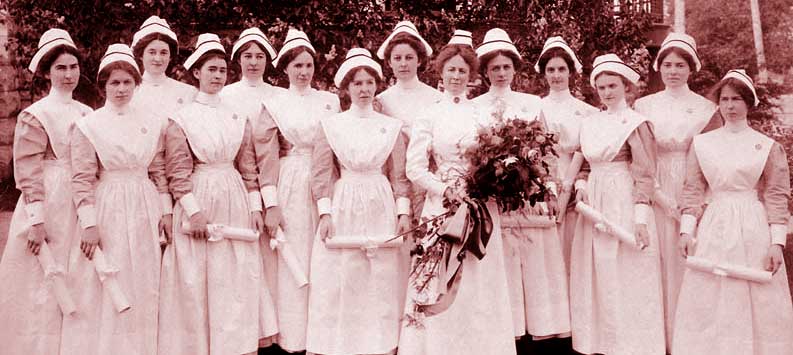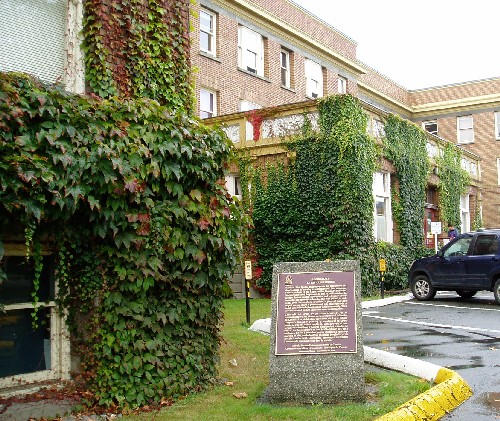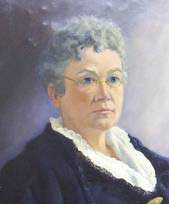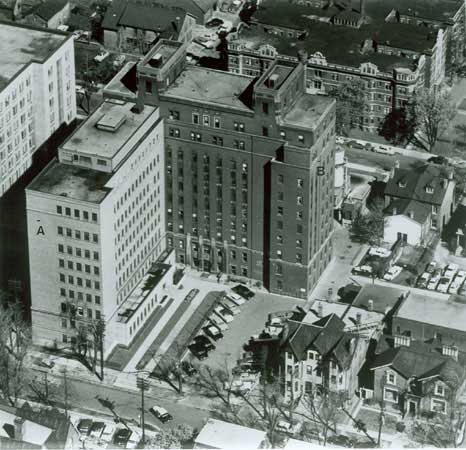Nurses in Canada
Published: December 2010

At the end of the 19th century, with advancements in medicine
and surgical procedures, technical and personal care services
provided by nurses required more rigorous training and further
schooling.
 In 1903, the nurses' residence at the
Kingston General Hospital was one of the first residences
constructed to address these concerns. Now known as the
Ann Baillie Building, the residence was re-named in honour of a
former graduate and devoted Warden of the institution after her
death in 1942.
In 1903, the nurses' residence at the
Kingston General Hospital was one of the first residences
constructed to address these concerns. Now known as the
Ann Baillie Building, the residence was re-named in honour of a
former graduate and devoted Warden of the institution after her
death in 1942.
In the late 19th century, the nursing profession was undoubtedly
the most difficult field in medicine. The living conditions that
nursing students had to contend with were less than ideal, forced
to live in filthy wards filled with the incessant noise of
patients, surgery and care, while all the time exposed to sickness
and disease. Nurses' residences like the Ann Baillie Building
offered a clean and secure place for students, a social environment
between peers, a place of study and a community within the wider
community.
 Nurses' residences
such as
Begbie Hall, located in British Columbia, have become national
symbols of the development and recognition of nursing as a
profession. The ideas and activities that took place there
represent a key period in Canadian history from the turn of the
20th century: the transformation of a new nursing profession and
the expanding role of women within the new professional health
field, and within Canadian society in general.
Nurses' residences
such as
Begbie Hall, located in British Columbia, have become national
symbols of the development and recognition of nursing as a
profession. The ideas and activities that took place there
represent a key period in Canadian history from the turn of the
20th century: the transformation of a new nursing profession and
the expanding role of women within the new professional health
field, and within Canadian society in general.
These buildings are part of five nursing residences that have
been commemorated and designated as national symbols including the
Hersey Pavilion,
St. Boniface Hospital Nurses' Residence, and
Pavillon Mailloux.
 Nurses were true
pioneers in various areas of public life, creating institutions and
public services. They founded both religious and secular schools,
set up childcare clinics and hospitals, assumed hospital
management, taught the young and cared for the sick.
Nurses were true
pioneers in various areas of public life, creating institutions and
public services. They founded both religious and secular schools,
set up childcare clinics and hospitals, assumed hospital
management, taught the young and cared for the sick.
Of course, in these early years, women wishing to break into the
medical profession were met with difficulties. The life of Emily
Stowe (1831-1903), a national historic person, is a testament to
the courage and determination of these early female medical
professionals.
Following the refusal of her application to the Toronto School
of Medicine, Emily Stowe left her hometown to study at the New York
Medical College for Women. In 1867, Dr. Emily Stowe returned home
to practice medicine but needed further schooling to obtain a
medical license in Ontario. Although access for women was always
refused in medical establishments, she managed to finally enter the
Toronto School of Medicine with her friend Jenny Trout.
In 1883, thanks to a fierce campaign, the first female doctor in
Canada managed to open a medical school for women in downtown
Toronto. In 1895, it merged with its sister establishment, founded
by Jenny Trout, to form the Ontario Medical College for Women which
provided a welcoming environment for female students wishing to
pursue medicine.
 This
inspired the formation of the
Women's College Hospital some years later. The Women's College
Hospital became a leading institution that provided women with
medical education, practice, and teaching at a time when such
opportunities were non-existent or limited for Canadian women.
This
inspired the formation of the
Women's College Hospital some years later. The Women's College
Hospital became a leading institution that provided women with
medical education, practice, and teaching at a time when such
opportunities were non-existent or limited for Canadian women.